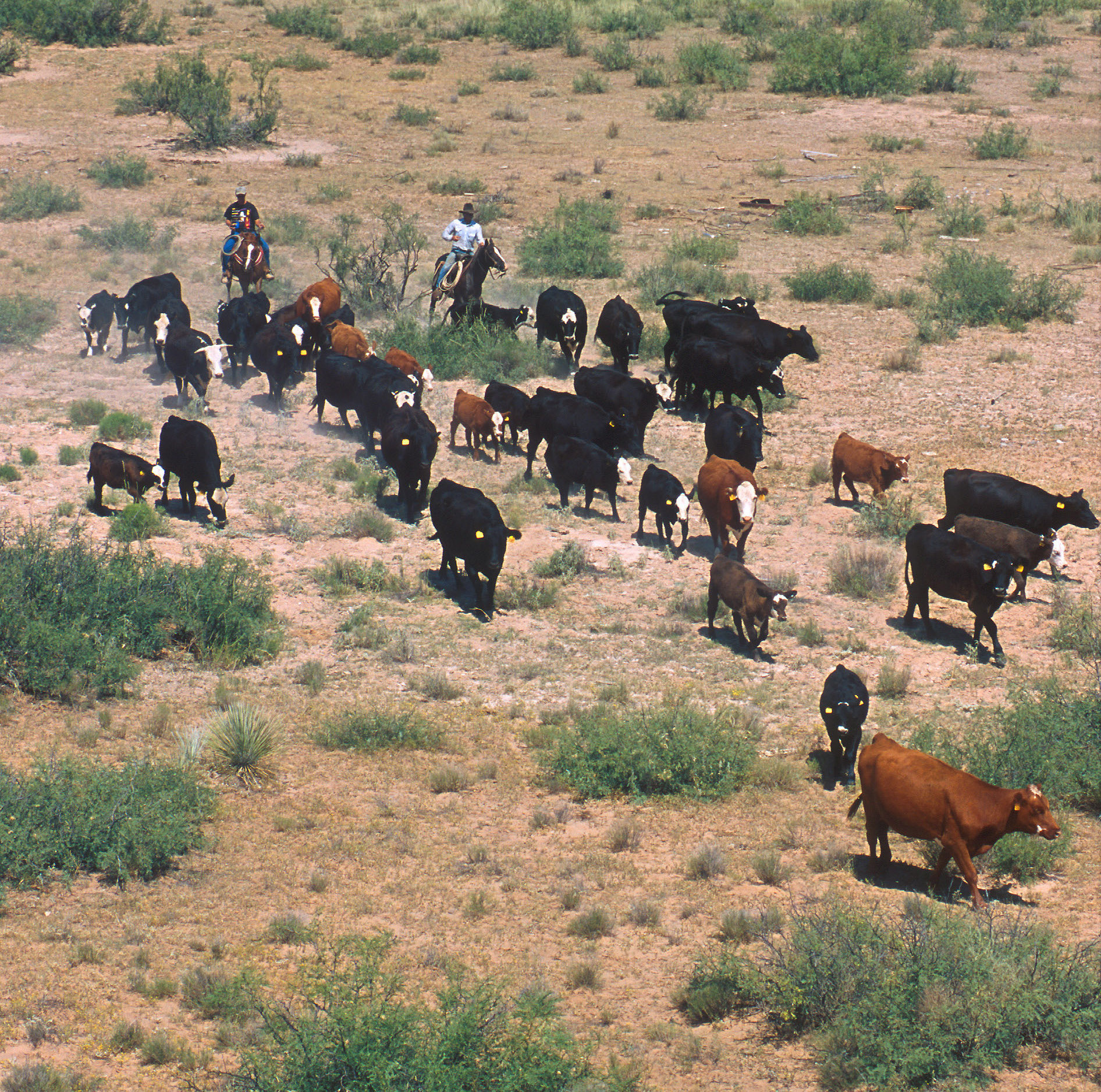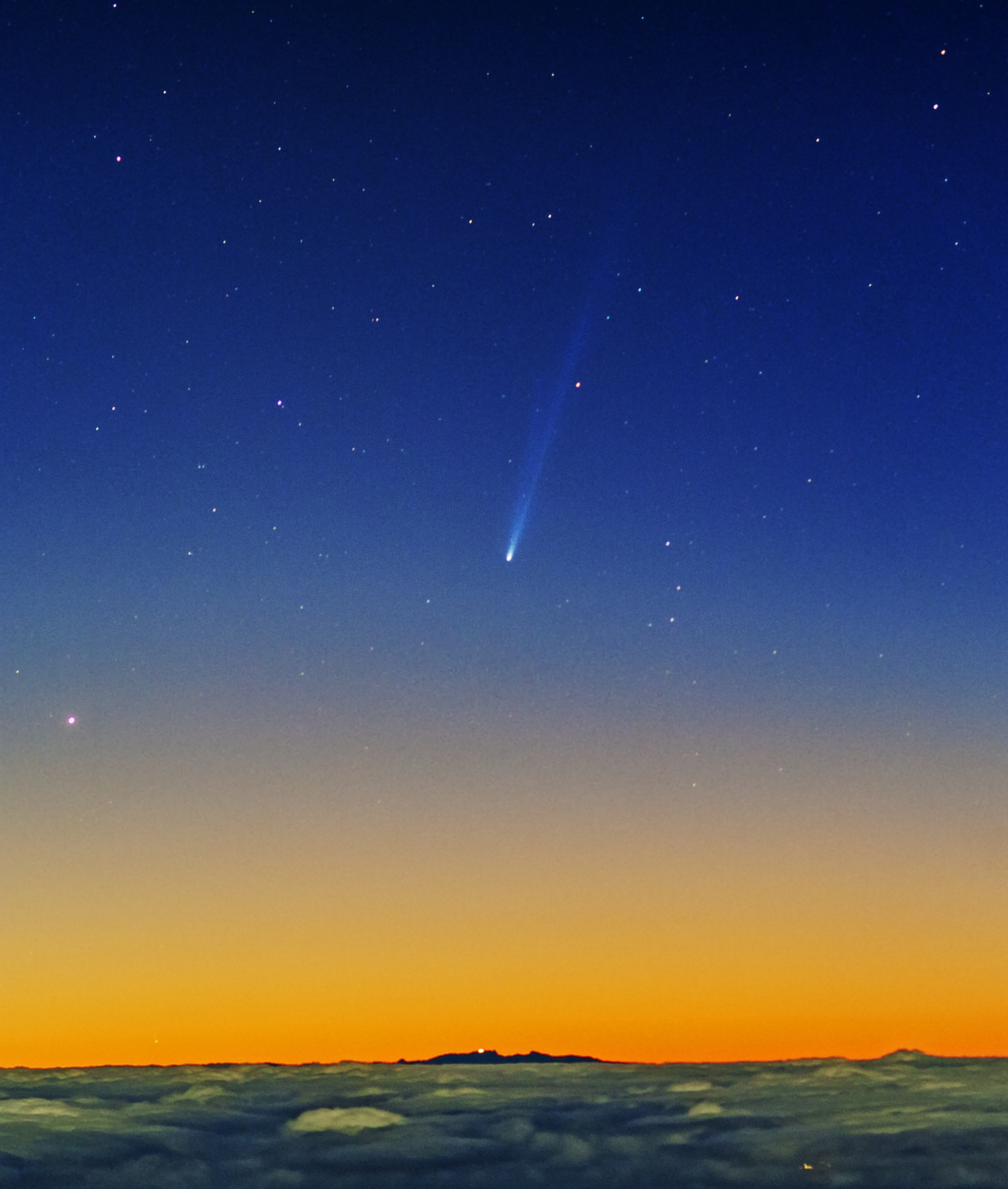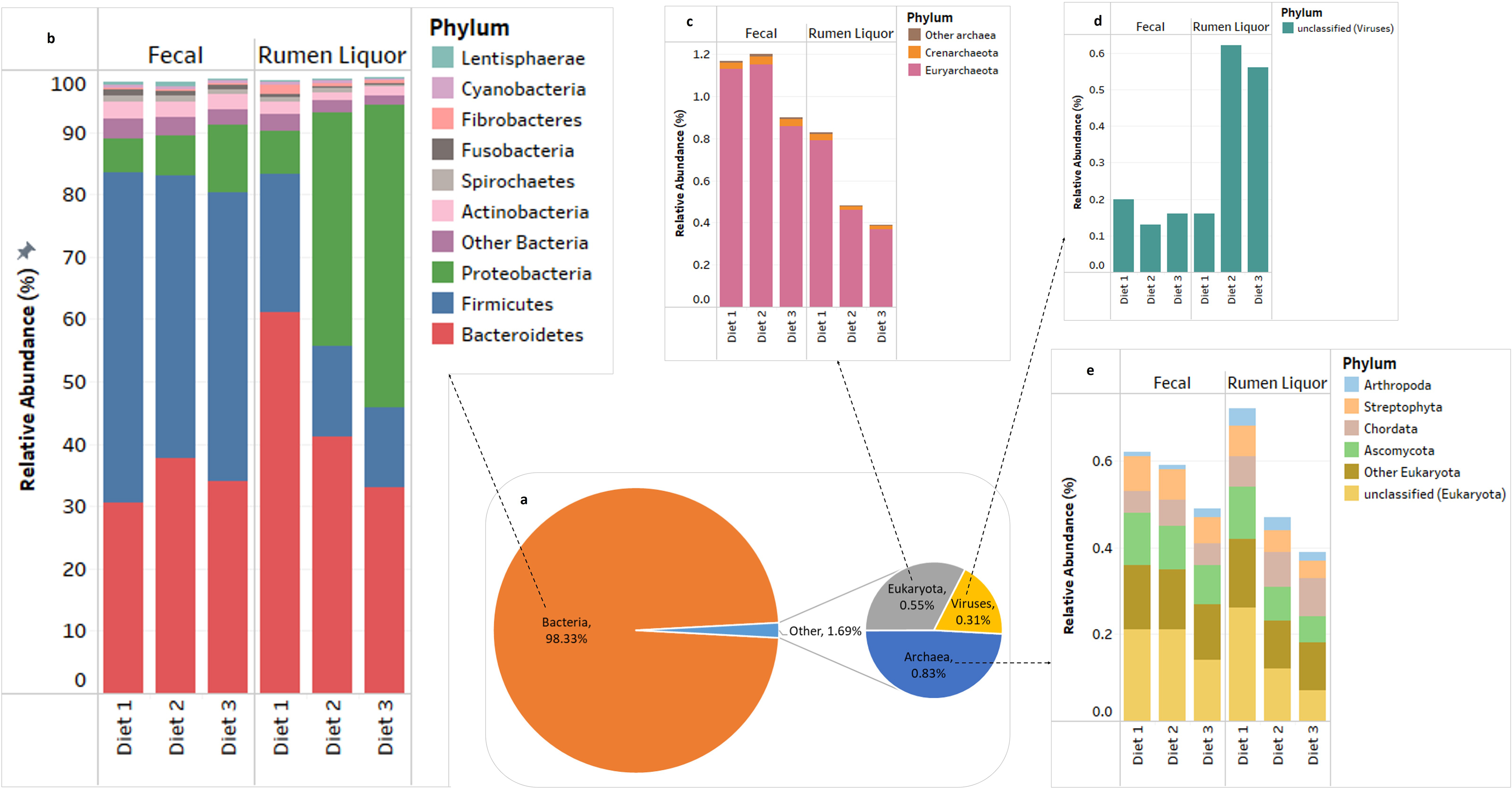|
Droving
Droving is the practice of walking livestock over long distances. It is a type of herding, often associated with cattle, in which case it is a cattle drive (particularly in the US). Droving stock to market—usually on foot and often with the aid of dogs—has a very long history. An owner might entrust an agent to deliver stock to market and bring back the proceeds. There has been droving since people in cities found it necessary to source food from distant supplies. Description Droving is the practice of moving livestock herds over long distances by walking them " on the hoof", sometimes several hundred kilometers. It was carried out by shepherds. The earliest written evidence about shepherds and their dogs dates back to the 14th century. Thousands of cattle were moved along the roads of Europe and Great Britain, and later sheep, goats, pigs and even geese and turkeys. The journey from pasture to market, slaughterhouse, or buyer could take anywhere from a few weeks to a f ... [...More Info...] [...Related Items...] OR: [Wikipedia] [Google] [Baidu] |
Livestock
Livestock are the Domestication, domesticated animals that are raised in an Agriculture, agricultural setting to provide labour and produce diversified products for consumption such as meat, Egg as food, eggs, milk, fur, leather, and wool. The term is sometimes used to refer solely to animals which are raised for consumption, and sometimes used to refer solely to farmed ruminants, such as cattle, sheep, and goats. The breeding, maintenance, slaughter and general subjugation of livestock called ''animal husbandry'', is a part of modern agriculture and has been practiced in many cultures since humanity's transition to farming from hunter-gatherer lifestyles. Animal husbandry practices have varied widely across cultures and periods. It continues to play a major economic and cultural role in numerous communities. Livestock farming practices have largely shifted to intensive animal farming. Intensive animal farming increases the yield of the various commercial outputs, but also nega ... [...More Info...] [...Related Items...] OR: [Wikipedia] [Google] [Baidu] |
Cattle Drives In The United States
Cattle drives were a major economic activity in the 19th and early 20th century Western United States, American West, particularly between 1850s and 1910s. In this period, 27 million cattle were cattle drive, driven from Texas to railheads in Kansas, for shipment to stockyards in St. Louis and points east, and direct to Chicago. The long distances covered, the need for periodic rests by riders and animals, and the establishment of railheads led to the development of "cow towns" across the frontier. According to the Kraisingers, "...four Texas-based cattle trails - the Texas Road, Shawnee Trail System, the Goodnight-Loving Trail, Goodnight Trail System, the Chisholm Trail, Eastern/Chisholm Trail System, and Great Western Cattle Trail, The Western Trail System - were used to drive cattle north during the forty-year period between 1846 and 1886." Due to the extensive treatment of cattle drives in fiction and film, the horse has become the worldwide iconic image of the American West, ... [...More Info...] [...Related Items...] OR: [Wikipedia] [Google] [Baidu] |
Morning By ST Gill
Morning is either the period from sunrise to noon, or the period from midnight to noon. In the first definition it is preceded by the twilight period of dawn, and there are no exact times for when morning begins (also true of evening and night) because it can vary according to one's latitude, and the hours of daylight at each time of year. However, morning strictly ends at noon, when afternoon starts. Morning precedes afternoon, evening, and night in the sequence of a day. Originally, the term referred to sunrise. Etymology The Modern English words "morning" and "tomorrow" began in Middle English as , developing into , then , and eventually . English, unlike some other languages, has separate terms for "morning" and "tomorrow", despite their common root. Other languages, like Dutch language, Dutch, Scots language, Scots and German language, German, may use a single wordto signify both "morning" and "tomorrow". Significance Cultural implications Morning prayer is a common prac ... [...More Info...] [...Related Items...] OR: [Wikipedia] [Google] [Baidu] |
Tirol, Austria
Tyrol ( ; ; ) is an Austrian federal state. It comprises the Austrian part of the historical Princely County of Tyrol. It is a constituent part of the present-day Euroregion Tyrol–South Tyrol–Trentino (together with South Tyrol and Trentino in Italy). The capital of Tyrol is Innsbruck. Geography Tyrol is separated into two parts, divided by a strip of Salzburg State. The two constituent parts of Tyrol are the northern and larger North Tyrol () and the southeastern and smaller East Tyrol ('). Salzburg State lies to the east of North Tyrol, while on the south Tyrol has a border to the Italian province of South Tyrol, which was part of the Austro-Hungarian Empire before the First World War. With a land area of , Tyrol is the third-largest federal state in Austria. North Tyrol shares its borders with the federal states Salzburg in the east and Vorarlberg in the west. In the north, it adjoins the German federal state of Bavaria; in the south, it shares borders with t ... [...More Info...] [...Related Items...] OR: [Wikipedia] [Google] [Baidu] |
Cattle
Cattle (''Bos taurus'') are large, domesticated, bovid ungulates widely kept as livestock. They are prominent modern members of the subfamily Bovinae and the most widespread species of the genus '' Bos''. Mature female cattle are called cows and mature male cattle are bulls. Young female cattle are called heifers, young male cattle are oxen or bullocks, and castrated male cattle are known as steers. Cattle are commonly raised for meat, for dairy products, and for leather. As draft animals, they pull carts and farm implements. Cattle are considered sacred animals within Hinduism, and it is illegal to kill them in some Indian states. Small breeds such as the miniature Zebu are kept as pets. Taurine cattle are widely distributed across Europe and temperate areas of Asia, the Americas, and Australia. Zebus are found mainly in India and tropical areas of Asia, America, and Australia. Sanga cattle are found primarily in sub-Saharan Africa. These types, sometime ... [...More Info...] [...Related Items...] OR: [Wikipedia] [Google] [Baidu] |
Australia
Australia, officially the Commonwealth of Australia, is a country comprising mainland Australia, the mainland of the Australia (continent), Australian continent, the island of Tasmania and list of islands of Australia, numerous smaller islands. It has a total area of , making it the list of countries and dependencies by area, sixth-largest country in the world and the largest in Oceania. Australia is the world's flattest and driest inhabited continent. It is a megadiverse countries, megadiverse country, and its size gives it a wide variety of landscapes and Climate of Australia, climates including deserts of Australia, deserts in the Outback, interior and forests of Australia, tropical rainforests along the Eastern states of Australia, coast. The ancestors of Aboriginal Australians began arriving from south-east Asia 50,000 to 65,000 years ago, during the Last Glacial Period, last glacial period. By the time of British settlement, Aboriginal Australians spoke 250 distinct l ... [...More Info...] [...Related Items...] OR: [Wikipedia] [Google] [Baidu] |
United States
The United States of America (USA), also known as the United States (U.S.) or America, is a country primarily located in North America. It is a federal republic of 50 U.S. state, states and a federal capital district, Washington, D.C. The 48 contiguous states border Canada to the north and Mexico to the south, with the semi-exclave of Alaska in the northwest and the archipelago of Hawaii in the Pacific Ocean. The United States asserts sovereignty over five Territories of the United States, major island territories and United States Minor Outlying Islands, various uninhabited islands in Oceania and the Caribbean. It is a megadiverse country, with the world's List of countries and dependencies by area, third-largest land area and List of countries and dependencies by population, third-largest population, exceeding 340 million. Its three Metropolitan statistical areas by population, largest metropolitan areas are New York metropolitan area, New York, Greater Los Angeles, Los Angel ... [...More Info...] [...Related Items...] OR: [Wikipedia] [Google] [Baidu] |
Cattle Drive Near Pinedale, WY (14963962303)
Cattle (''Bos taurus'') are large, domesticated, bovid ungulates widely kept as livestock. They are prominent modern members of the subfamily Bovinae and the most widespread species of the genus '' Bos''. Mature female cattle are called cows and mature male cattle are bulls. Young female cattle are called heifers, young male cattle are oxen or bullocks, and castrated male cattle are known as steers. Cattle are commonly raised for meat, for dairy products, and for leather. As draft animals, they pull carts and farm implements. Cattle are considered sacred animals within Hinduism, and it is illegal to kill them in some Indian states. Small breeds such as the miniature Zebu are kept as pets. Taurine cattle are widely distributed across Europe and temperate areas of Asia, the Americas, and Australia. Zebus are found mainly in India and tropical areas of Asia, America, and Australia. Sanga cattle are found primarily in sub-Saharan Africa. These types, sometimes classi ... [...More Info...] [...Related Items...] OR: [Wikipedia] [Google] [Baidu] |
Stone Age
The Stone Age was a broad prehistory, prehistoric period during which Rock (geology), stone was widely used to make stone tools with an edge, a point, or a percussion surface. The period lasted for roughly 3.4 million years and ended between 4000 Anno Domini, BC and 2000 BC, with the advent of metalworking. It therefore represents nearly 99.3% of human history. Though some simple metalworking of malleable metals, particularly the use of Goldsmith, gold and Coppersmith, copper for purposes of ornamentation, was known in the Stone Age, it is the melting and smelting of copper that marks the end of the Stone Age. In Western Asia, this occurred by about 3000 BC, when bronze became widespread. The term Bronze Age is used to describe the period that followed the Stone Age, as well as to describe cultures that had developed techniques and technologies for working copper alloys (bronze: originally copper and arsenic, later copper and tin) into tools, supplanting ston ... [...More Info...] [...Related Items...] OR: [Wikipedia] [Google] [Baidu] |
Stonehenge
Stonehenge is a prehistoric Megalith, megalithic structure on Salisbury Plain in Wiltshire, England, west of Amesbury. It consists of an outer ring of vertical sarsen standing stones, each around high, wide, and weighing around 25 tons, topped by connecting horizontal lintel stones, held in place with mortise and tenon joints, a feature unique among contemporary monuments. Inside is a ring of smaller bluestones. Inside these are free-standing trilithons, two bulkier vertical sarsens joined by one lintel. The whole monument, now ruinous, is aligned towards the sunrise on the summer solstice and sunset on the winter solstice. The stones are set within Earthwork (archaeology), earthworks in the middle of the densest complex of Neolithic British Isles, Neolithic and Bronze Age Britain, Bronze Age monuments in England, including several hundred ''tumuli'' (burial mounds). Stonehenge was constructed in several phases beginning about 3100 BC and continuing until about 1600 B ... [...More Info...] [...Related Items...] OR: [Wikipedia] [Google] [Baidu] |






